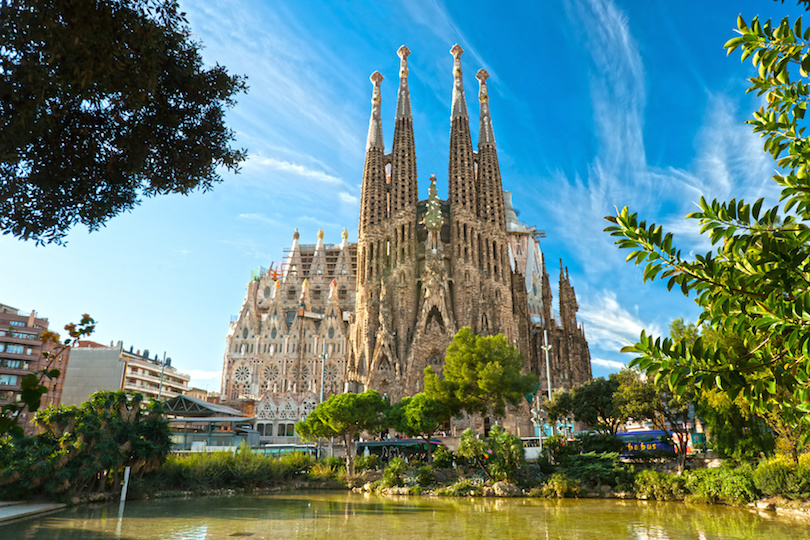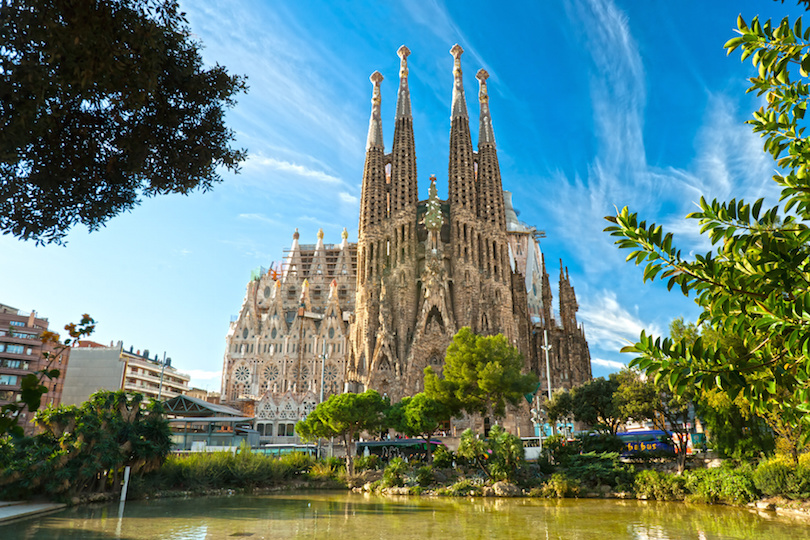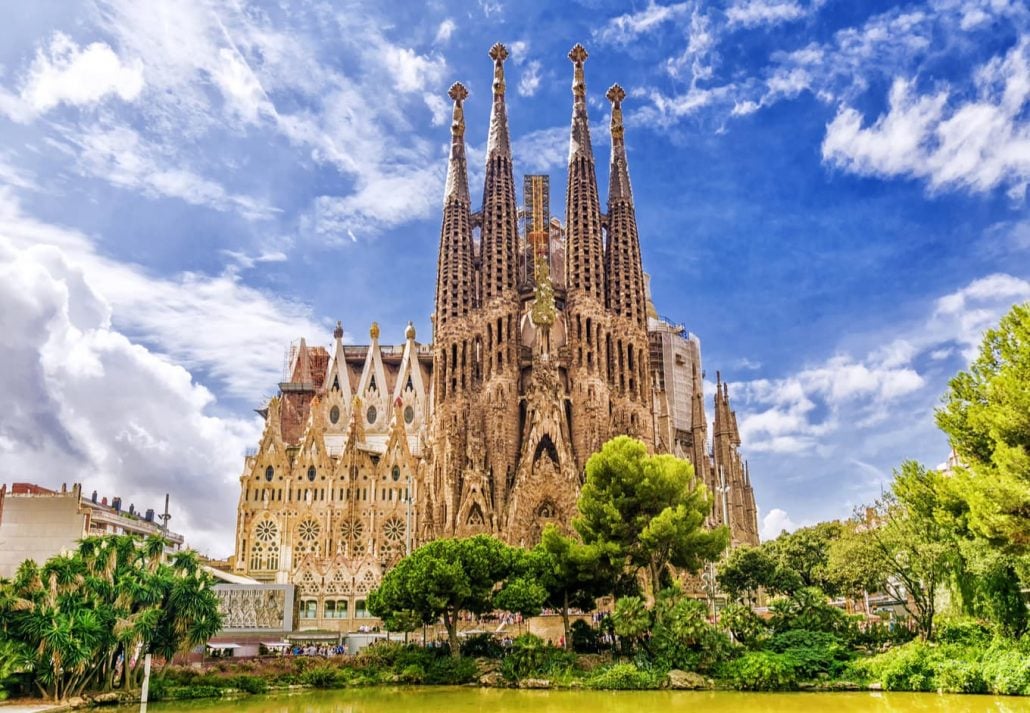
Spain, a land where the sun kisses ancient stones, flamenco rhythms echo through vibrant plazas, and the aroma of paella wafts from bustling kitchens, is a country that ignites the senses and captures the soul. From the snow-capped peaks of the Pyrenees to the sun-drenched shores of the Mediterranean, Spain offers a dazzling mosaic of experiences, weaving together a rich history, diverse cultures, and a passionate zest for life. This article will guide you through the top attractions that make Spain an unparalleled travel destination, along with practical advice to help you plan your unforgettable journey.
The Crown Jewels: Top Attractions in Spain
Spain’s allure lies in its extraordinary diversity, with each region boasting its own unique character and iconic landmarks. Here are some of the absolute must-sees:

Related Articles about Spain: A Tapestry of Sun, Soul, and Unforgettable Attractions:
- Unveiling the Roof of the World: A Comprehensive Guide to Nepal
- Chiang Mai: A Guide to the Rose of the North – Hotels, History, and Hidden Gems
- Venice: A Labyrinth of Wonders, History, and Unforgettable Experiences
- Edinburgh: A Majestic Sojourn – Discovering the Best Hotels Amidst History and Charm
- Greece: Where Ancient Wonders Meet Azure Dreams – Your Ultimate Travel Guide
1. The Alhambra, Granada: A breathtaking testament to Moorish architecture, the Alhambra is a palatial city perched atop a hill overlooking Granada. Its intricate stucco work, serene courtyards, and lush gardens, particularly the Generalife, create an atmosphere of ethereal beauty. Walking through its halls is like stepping back in time to the opulent era of the Nasrid dynasty, a UNESCO World Heritage site that continues to inspire awe.
2. Sagrada Familia, Barcelona: Antoni Gaudí’s unfinished masterpiece, the Sagrada Familia, is an architectural marvel that dominates Barcelona’s skyline. Its soaring spires, intricate facades depicting biblical scenes, and awe-inspiring interior filled with stained-glass light create a truly spiritual experience. While construction continues, the basilica’s visionary design and unique organic forms make it an absolute pilgrimage for art and architecture lovers.
3. The Prado Museum, Madrid: Home to one of the world’s finest collections of European art, the Prado Museum is a treasure trove for art aficionados. Masterpieces by Spanish greats like Goya, Velázquez, and El Greco hang alongside works by Rembrandt, Bosch, and Titian. Allow ample time to wander through its grand halls and immerse yourself in centuries of artistic brilliance.
4. The Royal Palace of Madrid: The official residence of the Spanish Royal Family (though now primarily used for state ceremonies), the Royal Palace is an opulent Baroque and Neoclassical structure. Its vast halls, lavishly decorated rooms, and the stunning Royal Armoury offer a glimpse into Spain’s regal past and its enduring monarchy.
5. Park Güell, Barcelona: Another of Gaudí’s whimsical creations, Park Güell is a public park that feels like a fantastical wonderland. Its vibrant mosaics, undulating benches, gingerbread-like houses, and playful sculptures offer panoramic views of Barcelona. It’s a delightful escape from the urban bustle, brimming with imagination and color.
6. The Alcázar of Seville: This stunning royal palace, a UNESCO World Heritage site, is a captivating blend of Moorish, Gothic, Renaissance, and Baroque architectural styles. Its intricate tilework, serene gardens, and tranquil courtyards, particularly the Patio de las Doncellas, showcase centuries of cultural fusion and provide a breathtaking backdrop.
7. Mezquita-Cathedral of Córdoba: A unique architectural phenomenon, the Mezquita-Cathedral is a former mosque that was later converted into a Catholic cathedral. Its iconic forest of horseshoe arches, salvaged from the original mosque, stands in striking contrast to the Renaissance cathedral built within. This UNESCO site is a powerful symbol of Spain’s diverse religious and cultural history.
8. The Guggenheim Museum Bilbao: A striking example of contemporary architecture, the Guggenheim Museum Bilbao, designed by Frank Gehry, is a shimmering masterpiece of titanium, glass, and limestone. Its dramatic curves and reflective surfaces have transformed the city and house an impressive collection of modern and contemporary art.
9. La Rambla and Gothic Quarter, Barcelona: Barcelona’s most famous boulevard, La Rambla, is a vibrant pedestrian street teeming with street performers, flower stalls, and lively cafes. Adjacent to it lies the atmospheric Gothic Quarter, a labyrinth of narrow medieval streets, hidden plazas, and historic churches, offering a captivating journey through Barcelona’s ancient heart.

10. Santiago de Compostela Cathedral: The culmination of the Camino de Santiago pilgrimage route, this magnificent cathedral is a spiritual and architectural marvel. Its Romanesque and Baroque architecture, intricate facades, and the tomb of Saint James the Great draw pilgrims and travelers from across the globe, radiating an aura of profound history and devotion.
A Journey Through Time: Spain’s Rich History
Spain’s history is a captivating saga of conquests, cultural exchanges, and the rise and fall of empires. Its strategic location at the crossroads of Europe and Africa has shaped its unique identity.
- Prehistoric Roots: Evidence of early human habitation dates back tens of thousands of years, with notable cave paintings found in Altamira.
- Iberian and Celtic Influences: Indigenous Iberian tribes and Celtic peoples laid the foundations for early Spanish cultures.
- Roman Hispania: The Romans conquered the Iberian Peninsula, leaving behind impressive infrastructure, including roads, aqueducts, and amphitheaters, and influencing language and law.
- Visigothic Kingdom: After the fall of the Roman Empire, the Visigoths established a kingdom, further shaping the region’s political landscape.
- Al-Andalus: The Moorish Golden Age: From the 8th to the 15th centuries, a significant portion of the Iberian Peninsula was under Muslim rule. This period, known as Al-Andalus, was a golden age of intellectual, artistic, and scientific flourishing. The Moors introduced advanced agricultural techniques, scientific knowledge, and architectural styles that are still evident today, particularly in Andalusia.
- The Reconquista: Christian kingdoms in the north gradually pushed south, leading to a centuries-long conflict known as the Reconquista. This culminated in 1492 with the fall of Granada and the unification of Spain under Catholic Monarchs Ferdinand and Isabella.
- The Spanish Empire: The same year, Columbus’s voyage marked the beginning of Spain’s vast colonial empire, making it a global superpower for centuries. This era brought immense wealth but also led to widespread exploitation and conflict.
- Decline and Modern Spain: Internal struggles, wars, and the loss of its colonies led to Spain’s decline as a world power. The 20th century saw periods of political upheaval, including the Spanish Civil War, followed by the Franco dictatorship and the subsequent transition to a democratic constitutional monarchy.
Today, Spain is a vibrant democracy and a member of the European Union, celebrating its rich heritage while embracing its modern identity.
Planning Your Spanish Adventure: Essential Travel Tips
To make the most of your Spanish experience, consider these practical tips:
- Language: While English is spoken in tourist areas, learning a few basic Spanish phrases will be greatly appreciated. "Hola" (hello), "Gracias" (thank you), and "Por favor" (please) go a long way.
- Currency: The currency is the Euro (€). Credit cards are widely accepted, but it’s advisable to carry some cash for smaller establishments and markets.
- Tipping: Tipping is not as ingrained as in some other countries. In restaurants, rounding up the bill or leaving a small amount (5-10%) for excellent service is customary. For taxis, it’s common to round up.
- Siesta Culture: While the traditional siesta (afternoon nap) is less prevalent in major cities, some smaller shops and businesses may still close for a few hours in the early afternoon, typically between 2 PM and 5 PM. Plan your shopping accordingly.
- Pace Yourself: Spain is a country to be savored. Don’t try to cram too much into one trip. Embrace the slower pace of life, enjoy leisurely meals, and soak in the atmosphere.
- Book in Advance: For popular attractions like the Alhambra and Sagrada Familia, booking tickets online well in advance is highly recommended to avoid long queues and disappointment.
- Stay Hydrated: Especially during the summer months, the Spanish sun can be intense. Carry a water bottle and stay hydrated.
- Be Aware of Pickpockets: In crowded tourist areas, be mindful of your belongings and keep valuables secure.
Where to Rest Your Head: Accommodation Options
Spain offers a wide spectrum of accommodation to suit every budget and style:
- Hotels: From luxury five-star establishments to charming boutique hotels and budget-friendly options, Spain has a hotel for everyone. Major cities offer a vast selection.
- Hostels: A popular choice for solo travelers and those on a budget, hostels provide dormitory-style rooms and private options, often with social common areas.
- Apartments and Vacation Rentals: Ideal for families or longer stays, renting an apartment offers more space, a kitchen, and a more local living experience. Platforms like Airbnb are widely used.
- Paradores: These are state-run luxury hotels located in historic buildings, such as former palaces, castles, or monasteries. They offer a unique and elegant way to experience Spain’s heritage.
- Casas Rurales (Rural Houses): For a more authentic and tranquil experience, consider renting a rural house in the countryside, often offering stunning natural surroundings.
Navigating the Iberian Peninsula: Transportation
Spain boasts an excellent and efficient transportation network:
- High-Speed Trains (AVE): Spain’s high-speed rail network is one of the best in Europe, connecting major cities quickly and comfortably. Renfe is the national rail operator. Booking tickets in advance can often secure better prices.
- Regional Trains: For travel between smaller towns and cities, regional trains are a convenient option.
- Buses: An extensive bus network covers virtually every corner of Spain, offering a more economical alternative to trains, especially for routes not served by rail. Companies like Alsa are prominent.
- Flights: For longer distances or travel between islands (like the Balearics and Canaries), domestic flights are readily available.
- Car Rental: Renting a car offers the most flexibility, especially for exploring rural areas and smaller villages. Be aware of parking challenges in city centers and tolls on some highways.
- Metro and Public Transport in Cities: Most major cities have efficient metro systems, buses, and trams, making it easy to get around urban areas. Consider purchasing multi-day travel passes for convenience.
The Golden Glow: Best Time to Visit Spain
Spain enjoys a diverse climate, making it a year-round destination, but certain times offer a more pleasant experience depending on your preferences:
- Spring (April-May): This is an ideal time to visit. The weather is mild and pleasant, with blooming flowers and fewer crowds than in the peak summer months. It’s perfect for exploring cities and enjoying outdoor activities.
- Summer (June-August): This is peak tourist season, especially in coastal areas. Expect hot temperatures, particularly in the south, and bustling beaches. It’s the best time for sun-seekers and those who enjoy lively atmospheres. However, inland cities can be very hot.
- Autumn (September-October): Similar to spring, autumn offers pleasant temperatures and fewer crowds. The landscapes are beautiful with changing colors, and the sea is still warm enough for swimming in many coastal regions.
- Winter (November-March): While coastal areas in the south can be mild, northern Spain can be cold and wet. However, winter is a great time to visit cities like Madrid and Barcelona for cultural experiences, Christmas markets, and lower prices. Skiing is also an option in the Pyrenees.
In Conclusion:
Spain is a country that offers an inexhaustible wealth of experiences. From the architectural marvels of Gaudí and the Moorish splendor of Andalusia to the artistic masterpieces of the Prado and the spiritual pilgrimage of Santiago de Compostela, its attractions are as diverse as its landscapes. By understanding its history, planning with practical tips, and choosing the best time to visit, you can unlock the magic of Spain and create memories that will last a lifetime. So pack your bags, embrace the Spanish spirit, and prepare to be captivated by this extraordinary corner of the world.





